Before Frumkin’s appearance in Colloid-Electrochemical Institute (the future Institute of Physical Chemistry) in 1939, electrochemical branch of this Institute was mostly occupied by corrosion and electrodeposition research. The Institute was headed by Vladimir Aleksandrovich Kistyakovskyi (1865-1952) <the link goes to obituary in Russian>. During his youth, after some period in Ostwald’s lab, he became the supporter of Arrhenius-Ostwald concepts, and looked for a way to combine these concepts with Mendeleyev’s “chemical” approach to solutions. Some formulations in Kistyakovskyi’s 1889 thesis can be understood in terms of ions solvation (see a brief review of Yu.I. Soloviev in Zhurnal Fizicheskoi Khimii. 1956. V. 30. P. 1910-1995, in Russian). Later Kistyakovskyi’s research covered numerous topics, and sometimes possessed slightly philisophic tinge. To present some example of his general views: The problem of metal corrosion and colloido-electrochemistry // Uspekhi Khimii. 1933. V. 2. P. 237-248, in Russian; On some hypotheses and regularities of colloido-electrochemistry // Izvestiya Akademii Nauk SSSR. 1937. N 5. P. 1049-1063. After the text in Russian (P. 1049-1059), more brief text in German (P. 1059-1063) is available.
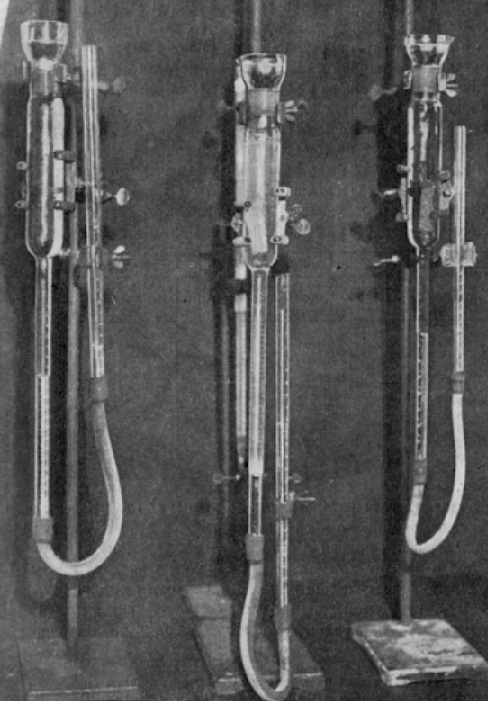
Corrosion protection was considered as a topic of national importance before WWII, and Kistyakovskyi presented himself as a leading scientist in the area. His concept was named “film theory of corrosion” (assuming passivation by spontaneously formed amorphous oxide/hydroxide films). He chaired the first USSR conference on corrosion in 1934 (collection of conference articles is available as an electronic book in Russian). The scale of this event can be envisaged from the following: there were 178 participants from 91 institutions, and 150 guests. Corrosion had been addressed mostly in weight loss experiments. Electrochemical tools were reduced to very rare potentiometric experiments (open circuit potentials). This photo presents “a novel device to measure evolved hydrogen” (as reported at the 1934 conference): the corroding sample is located in the solution in the wide part of the tube, hydrogen is determined volumetrically, mercury shutters isolate the system from the atmosphere. Electrodeposition was mostly considered in this community as the technique to protect metals from corrosion.
Initially, this branch consisted of Kistyakovskyi’s collaborators and former students. Yu.M. Polukarov mentions the names of people who moved from Leningrad in 1934. Ivan Vasil’evich Krotov (1901-?) had experience in both electrocrystallization and corrosion research. David (Danila) Isaevich Mirlis (we only know that he went missing during WWII, already in 1941) was mostly working on corrosion. They both studied, in particular, corrosion phenomena in three-phase systems, including immisсible solvents (to model the behavior in oil-water mixtures). One can also find some links to basic interfacial phenomena, see an example in Mirlis’ 1937 article on the wetting effects, which is citing Frumkin’s results and indicates a collaboration with P.A. Rebinder. One more corrosion person was Evgeny Isaevich Gurovich (1898-1984?), who worked in
Ksenia Mikhailovna Gorbunova (1904-1990) headed electrochemical group already before the transfer from Leningrad, and remained the key person in electrodeposition field in the Institute of Physical chemistry for several decades. Another Kistyakovskyi’s former student active in this area was her husband Pavel Davydovich Dankov (1902-1952) <link goes to obituary in Russian>. Dankov’s and Gorbunova’s relations with Frumkin school were not as easy as one can wish.
In contrast, Ashot Tigranovich Vagramyan (1908-1973) was rather close to Frumkin school during all his life. He graduated from Yerevan University in 1931 and joined Kistyakovskyi’s lab in Leningrad in 1932 as PhD student. The earliest Vagramyan’s article we could find is on mechanical activation of the electrode surface, published with K.M. Gorbunova in 1934. He was affiliated with Electrochemical lab of the Armenian Branch of the Academy of sciences of the USSR in mid 1930s, as we can judge from his 1937 articles on microscopic visualization of metal growth and visualization of growth dynamics. Then he worked in Frumkin’s labs in Karpov Inst (at least from 1939) and in the Inst of Physical chemistry since 1941. His DSc thesis (1944) addressed silver deposition. He combined electrochemical approach to electrocrystallization research with the studies of strain in electrodeposited metals and alloys. He authored a number of important books and made major contributions to the development of applied electrochemical education in Moscow Chemical-Technological Institute (МХТИ).
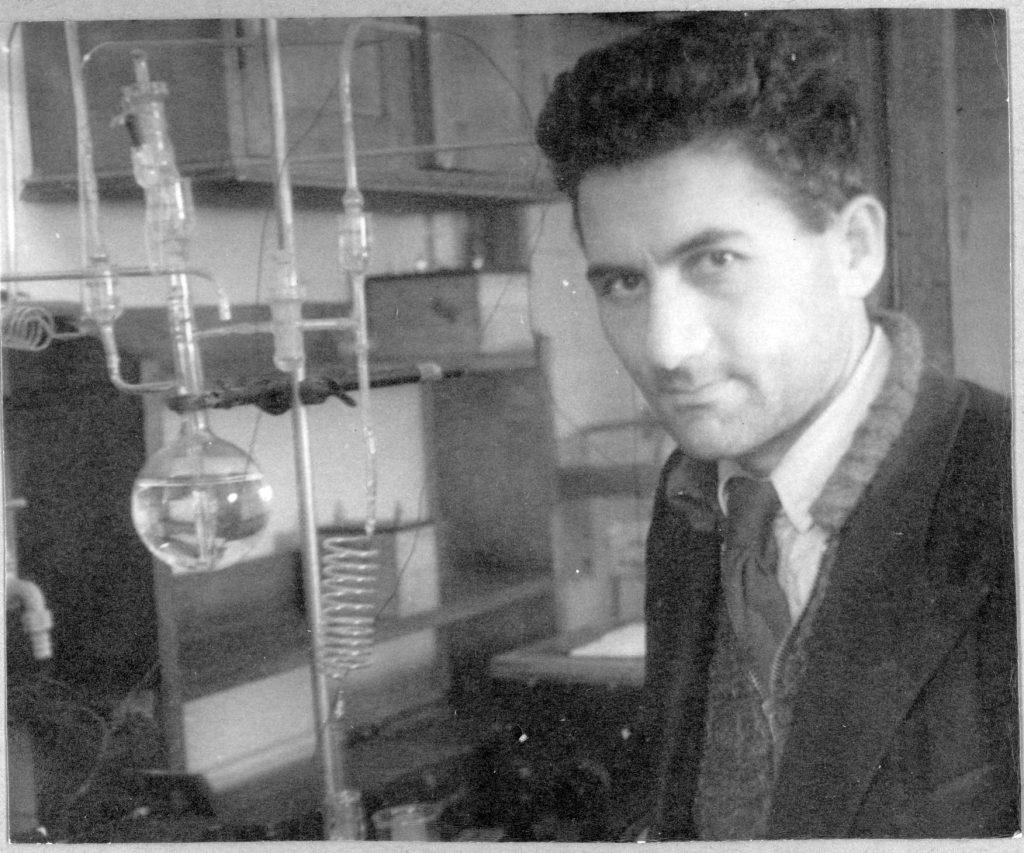
From the text of A.G. Morachevskyi we know another name, Andrey Nikiforovich Strel’nikov (1898-?), who headed the group of dispersion chemistry in Colloid-Electrochemical Lab. He participated in corrosion studies as well, see the 1934 example, and also studied the conductivity of solutions for complex mixtures. His group was probably not transferred to Moscow.
Nikolay Alekseevich Izgaryshev (1884-1956) was the former student of N.A. Shilov and spent some period in Karlsruhe. He was considered as a high-level expert in applied electrochemistry, and especially in metals passivity, which was one of the topics of his 1914 thesis on the electrode processes in non-aqueous media. He had multiple affiliations and started at the Institute as a part-time head of the lab of electrolysis and electrocrystallization in 1937 (and indicated this affiliation up to at least 1941). The next 1946-1952 period of his work in the Institute is also documented. In between, he initiated the Department of Electrochemical Engineering in Mendeleyev Institute of Chemical Technology (technical University), which he headed until his last day. In 1949 Izgaryshev became Editor-in-Chief of Zhurnal Fizicheskoi Khimii instead of Frumkin, who was dismissed in the course of political attacks. This list of Izgaryshev’s publications is extracted from his biography compiled by E.N. Budreiko (Moscow: Nauka Publ., 2008). We know at least one person from Izgaryshev-inspired and fully dissolved lab of technical electrochemistry of the Karpov Institute, who joined Colloid-Electrochemical Inst: S.P. Makar’eva, whose 1941 article shows the level of electrodeposition research in this team (pay attention to technique of solution deaeration!).
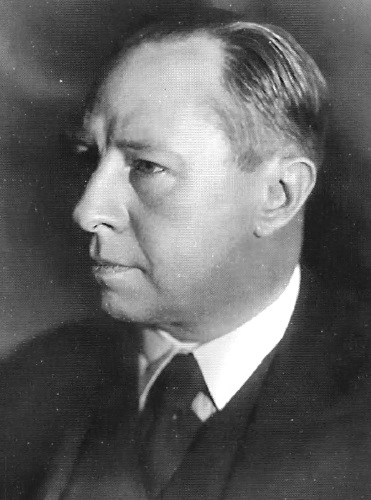
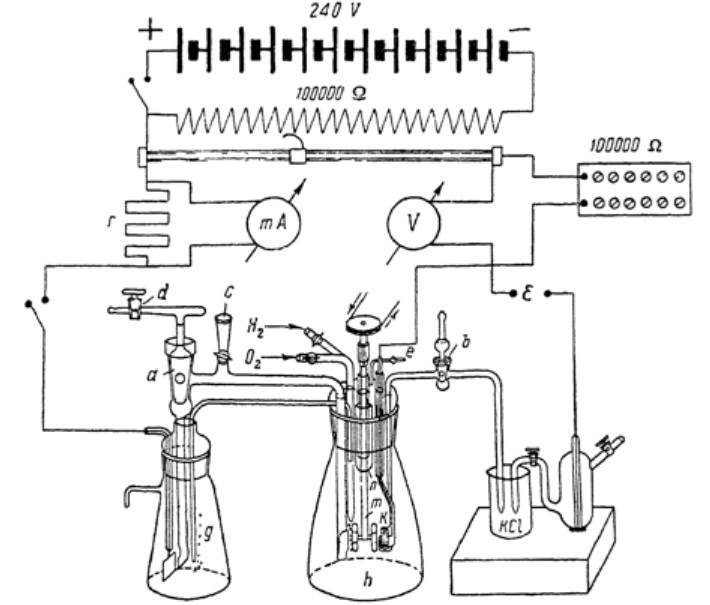
Georgyi Vladimirovich Akimov (1901-1953) appeared in the Institute of Physical Chemistry in the same year as Frumkin (1939), and continued in the Institute of Aviation Materials in parallel (see more detailed text in Russian). His corrosion-related activities were rather diverse, including gas-phase and high-temperature corrosion, and a wide variety of metals and alloys. Simultaneously, he studied some corrosion processes by means of electrochemical techniques, and applied electrochemical concepts (see, e.g., his “Theory of polyelectrode electrochemical cells and corrosion problems” in Acta physicochim. URSS. 1945. V.20. P. 809-832, in this e-book). This picture from the 1945 Akimov’s book (in Russian) shows a quite professional three-electrode cell with separated compartments for the measurements of polarization curves. The setup is constructed by Nikon Danilovich Tomashov (1905-1994), who also appeared in the Institute before WWII and led corrosion research for many years. Both Frumkin and Akimov were key lecturers at the second USSR conference on corrosion (collection of some conference articles, in Russian). Akimov headed the lab of corrosion of metals and alloys belonging to Kistyakovskyi’s division of corrosion, and replaced Frumkin as the director of the Institute in 1949, when political attacks against Frumkin made his further directorship impossible.
Similar to the Karpov Institute, a very important part of surrounding was represented by non-electrochemistry colleagues from the adjacent research areas.
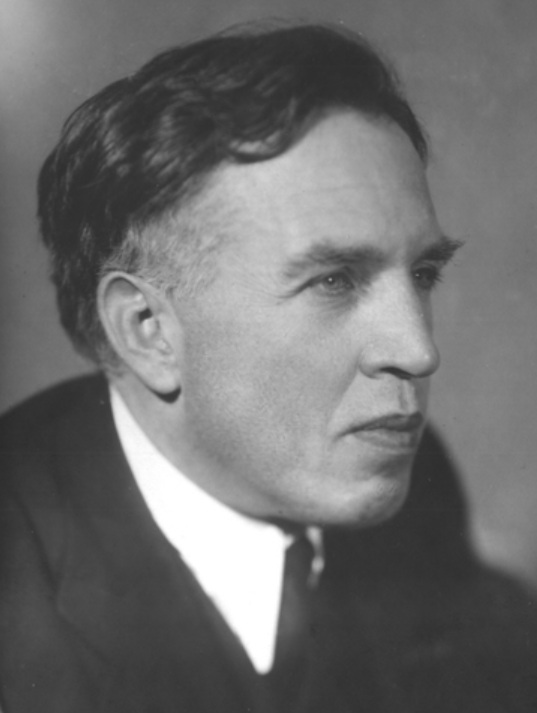
Petr Alexandrovich Rebinder (1898-1972) is associated with colloid science, but his main direction was essentially different as compared to A.I. Rabinovich: it was physical-chemical mechanics. This less usual research direction can be understood as the effect of interfacial phenomena on bulk mechanical properties of materials, see the review in Progr. Surface Sci. 1972. V.3, Pt 2. P. 97-188. P.A. Rebinder graduated from Moscow University in 1924, and started his lab in the Institute of Physical Chemistry in 1935. As a head of the Department of Colloid Chemistry, he was also the closest Frumkin’s ally in Moscow University. Beyond science, Rebinder was widely recognized for his stamps collection and efforts to develop philately in USSR (this post envelope is devoted to him). We use here the photo published as a part of the interview conducted by Yu.A. Zolotov.
Boris Vladimirovich Derjaguin [Deryagin] (1902-1994) is famous for his theories of colloids stability (with Lev D. Landau) and interfacial forces, as well as for many findings related to aerosols, suspensions, and foams. He was the Moscow University graduate (1922), started his lab in the Institute of Physical Chemistry in 1936, and had numerous topical intersections with A.N. Frumkin and V.G. Levich. A selection of 134 Derjaguin’s original articles was published in English in Progr. Surface Sci. 1991. V. 40, 1993. V. 43, and 1994. V.45. The first of these issues starts from a brief scientific biography written by Barry W. Ninham, who also authored another historical article in 2019.
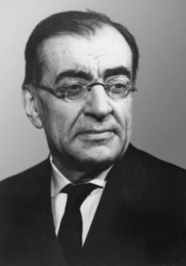
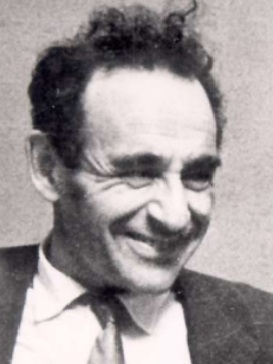
Simon Zalmanovich Roginsky[i] (1900-1970) was the 1922 graduate of Yekaterinoslav (later Dnepropetrovsk, now Dnipro) University, Ukraine, and his choice of catalysis area was affected by L.V. Pisarzhevsky[i] (1874-1938). At the end of 1920s he joined elite physicists in Leningrad, and after a few years moved to Semenov’s Institute of Chemical Physics. Roginskyi’s works with Ya.B. Zeldovich (1914-1987) are widely known, including Roginskyi-Zeldovich equation for chemosorption kinetics. He is also known for early (1930) quantum consideration of chemica kinetics. Roginskyi and all his lab were moved to the Institute of Physical Chemistry at the end of 1941 during the evacuation period in Kazan. He developed a very large division when the institute returned to Moscow, and moved back to Semenov Inst in 1961. Such an unusual Roginskyi’s photo is from this anniversary note (follow the link from this note to see other rare photos), as well as the list of publications (in Russian).
A version of Roginskyi-Zeldovich formula is also sometimes named Elovich equation, after Solomon Yul’evich Elovich (1899-1961). He started his work with Roginskyi while being a student in Dnepropetrovsk, then followed him to Leningrad and eventually to Moscow. Being a member of Roginskiy’s lab in Semenov Institute, he moved to the Institute of Physical Chemistry during WWII in Kazan, and led a separate lab in Roginskyi’s division after WWII. Both Roginskyi and Elovich were pioneers of applying radiotracer techniques in interfacial research. Their labs and Roginskyi’s division as a whole were dramatically affected by anti-cosmopolitans campaign. Roginskyi’s lab was separated and lost the possibility to work with isotopes, whereas Elovich’s lab found itself under supervision of V.I. Spitsyn. Elovich’s photo is copied from the book of F.I. Dubovitskyi on the history of the Institute of Chemical Physics.
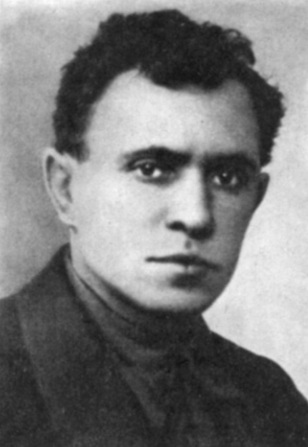
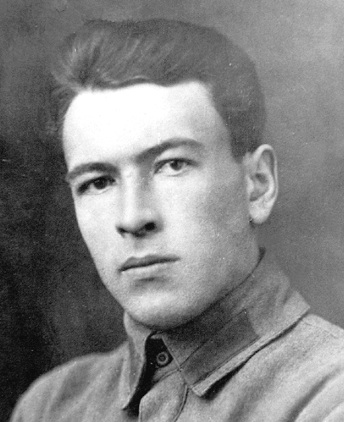
We should also mention Nikolay Aleksandrovich Figurovskyi (1901-1986), who was Rebinder’s doctorant starting from 1936 (DSc 1940; his 1935 PhD thesis was defended in Nizhnii Novgorod). He developed experimental instrument sometimes named “Figurovskyi’s balance” (Zavodskaya Laboratoriya. 1937. V. 6. P. 335-340; 1938. V. 7. P. 1076-1078; 1939. V.8. P. 68-73; ). It so happened that this young member of the communist party became Deputy Director when Frumkin started as the Director of Colloid-Electrochemical Institute in 1939, and that stopped only in 1941, after evacuation to Kazan. Later Figurovskyi was mostly known as an active historian of chemistry, teaching in Moscow Unversity (see the article dedicated to his 100 years jubilee, in Russian).